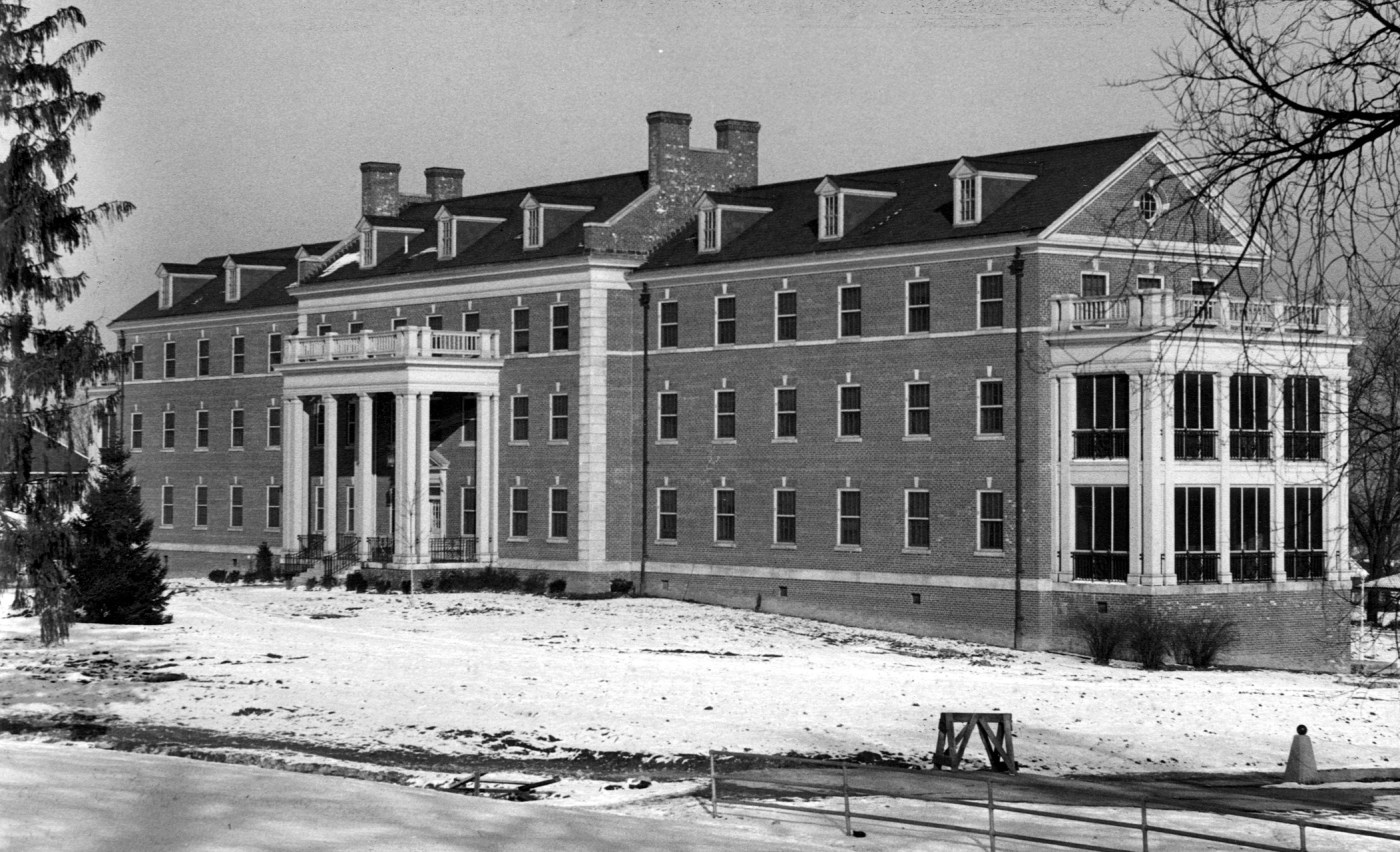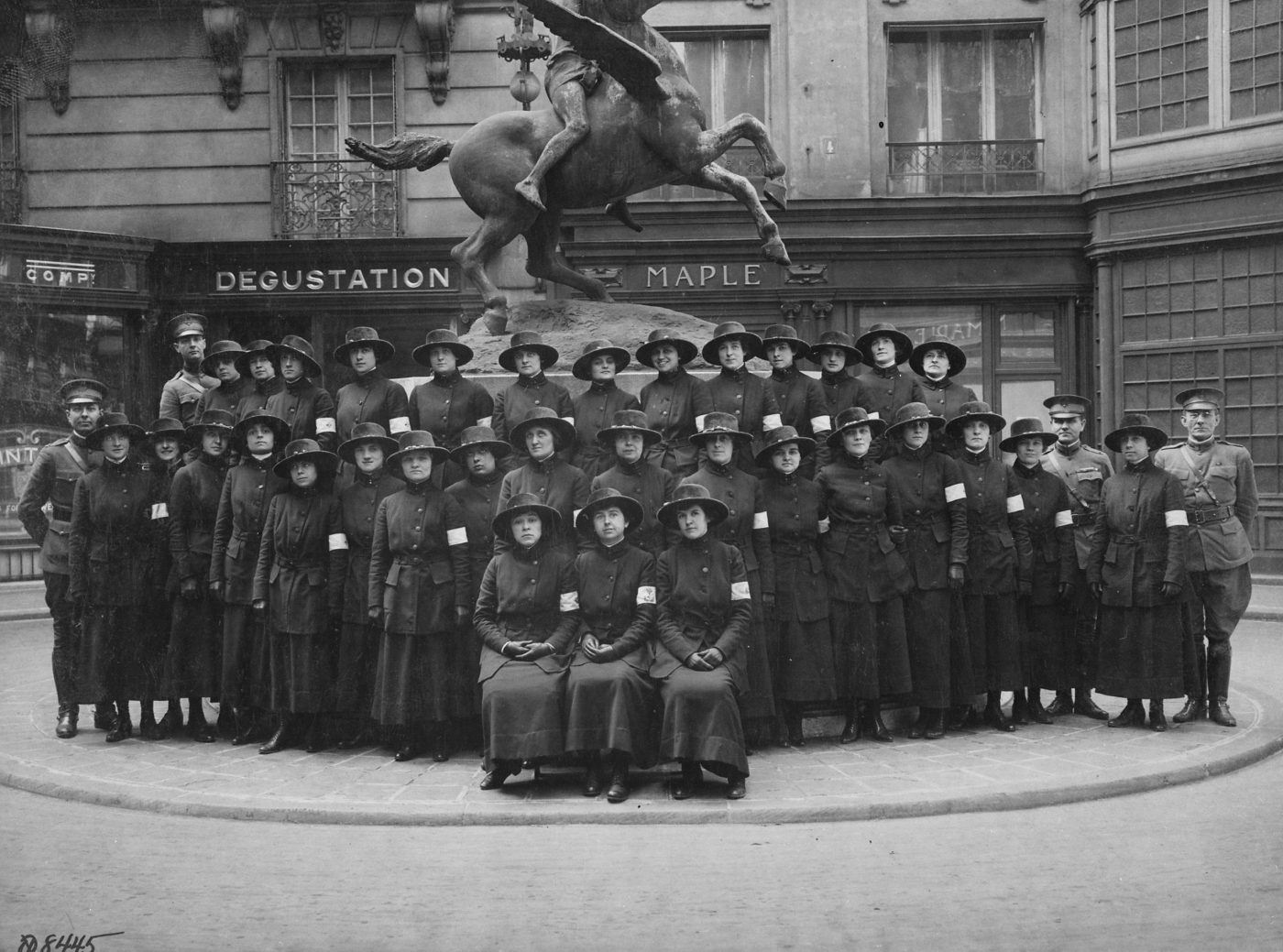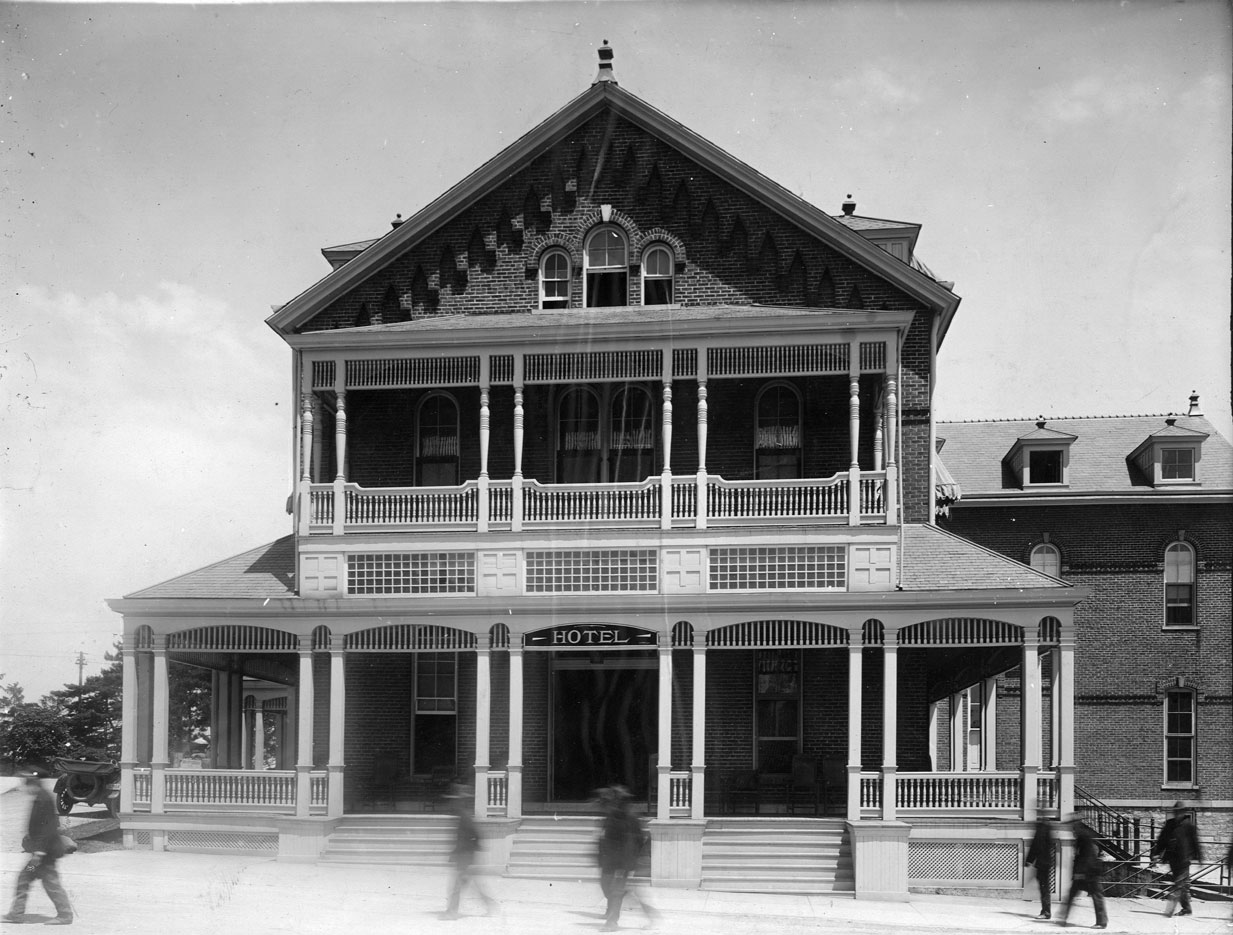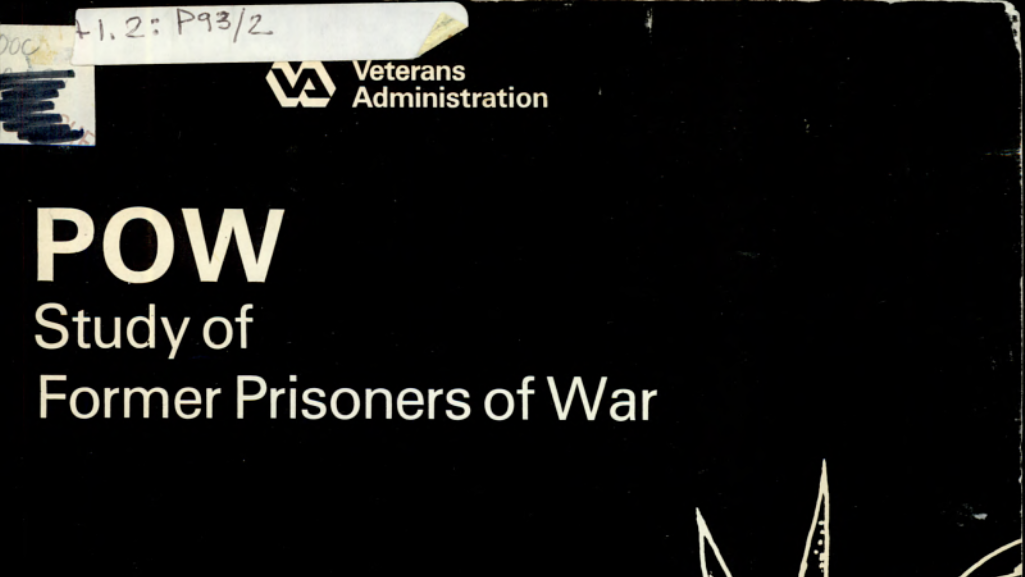
At the VA Medical Center in Dayton, Ohio, Miller Cottage stands as a mostly forgotten reminder of women’s fight for inclusion in the benefits and health care system for Veterans. This long, multi-story brick building with a white-columned portico originated as a barracks built specifically to house female Veterans on the grounds of what was then called the Central Branch of the National Home for Disabled Volunteer Soldiers (NHDVS). The establishment of the residence represented a rare victory for the female Veterans of the First World War in their quest to obtain government support for all uniformed women who served and sacrificed during that conflict.
Much of the credit for the creation of Miller Cottage belongs to the Women’s Overseas Service League (WOSL). Founded in 1921, the WOSL united women who had served overseas in any capacity during World War I. Much like other Veterans organizations of that era, such as the American Legion, the League aimed to provide community and support for Veterans. But WOSL members quickly found another mission they needed to undertake unique to their gender: advocating on behalf of both recognized and unrecognized female Veterans.
While World War I created new opportunities for women, it also produced new challenges afterwards. During the war, the U.S. military needed the services of women with special skills such as nursing, physical and occupational therapy, and telephone switchboard operations. Clerical workers were also critical to the war effort. For the first time in U.S. history, women were permitted to enlist in the armed forces thanks to a loophole in the law that allowed them to join the U.S. Navy as Navy Yeoman (F) and the U.S. Marine Corps as female Marines (two women also joined the U.S. Coast Guard). These women, along with those who served in the Army and Navy Nurse Corps, were the only women eligible for Veterans benefits after the war. All of the rest, including the U.S. Army Signal Corps’ telephone operators known as the Hello Girls, the physical and operational therapists who worked as Army reconstruction aides, and numerous other women who had filled critical positions, often while in uniform and under oath, were denied access to government benefits and services. Unbeknownst to many of them during the war, they had actually served in a civilian status, which meant they were not entitled to the benefits extended to male Veterans. As the leading organization representing female Veterans, the WOSL made the plight of these unrecognized Veterans a major part of its mission and members did whatever they could to advocate for the women left behind by the government.

Simultaneously, WOSL members committed much of their time to assisting the population of women who were officially recognized as Veterans by the government. These female Veterans often fell through the cracks of a system that was unprepared and ill-equipped to serve them. The WOSL advocated on behalf of these women and pressured the government into providing them with the benefits and medical care they deserved. Foremost among these efforts was the WOSL’s successful lobbying campaign to allow women Veterans to receive care at two branches of the NHDVS system in September 1923. Due in large part to the WOSL, women were admitted into a special wing of the tuberculosis hospital at the National Home in Milwaukee, Wisconsin, and to the barracks reserved for their use on the Danville, Illinois, campus. Both the national leadership of the WOSL and its many local units aided the women who resided at Danville, but the facilities proved inadequate. In March 1931, the residents moved to the National Home in Dayton, Ohio.

In Dayton, the women initially lived in two separate buildings. Those with more severe health issues stayed in a hospital annex, while healthier women took up residence in a former hotel known as Miller Cottage. The building was named for Emma L. Miller, a Civil War widow who dedicated much of her life to public service, serving for decades as matron of the Dayton home and then superintendent of the general depot supplying all of the branches in the NHDVS system. The move to Dayton improved the quality of life for the female Veterans. Each woman could have her own room and those in better health could travel into town by trolley car, unlike at the more isolated Danville location.
After securing the admission of these women to the Dayton home, WOSL members continued to look after their welfare. They even appointed a chairwoman to organize service projects specifically for the Dayton residents. The committee subscribed to magazines, sent the women games and puzzles, and provided materials for them to make hooked rugs and knitted items which they could sell to earn pocket money. Through an “adoption program,” local WOSL units “adopted” women at the home who came from their geographic area, becoming their pen pals and long-distance friends. This initiative helped the residents maintain a sense of companionship beyond the Dayton campus.

The original Miller Cottage, quaint as it was, could not handle the growing number of new arrivals, especially after nurses from the Spanish-American War also gained entry to the Dayton campus. On January 31, 1938, a new Miller Cottage opened and replaced the original repurposed hotel, which was demolished. The $300,000 building had enough room for 83 women. These more spacious accommodations became critical in the 1940s and afterwards, as World War II created a new and much larger generation of official female Veterans. In the years after World War II, Miller Cottage became a home for women from both world wars. In later decades, as VA shifted away from providing long-term domiciliary care, the building was converted to other purposes. However, it remains an important reminder of an era when women had to fight to create a space for themselves within a Veterans welfare system constructed to serve men.
By Allison Finkelstein, PhD,
Independent Historian and author of Forgotten Veterans, Invisible Memorials: How American Women Commemorated the Great War, 1917-1945
Share this story
Related Stories

History of VA in 100 Objects
Object 80: LUKE/DEKA Prosthetic Arm
In the 19th century, the federal government left the manufacture and distribution of prosthetic limbs for disabled Veterans to private enterprise. The experience of fighting two world wars in the first half of the 20th century led to a reversal in this policy.
In the interwar era, first the Veterans Bureau and then the Veterans Administration assumed responsibility for providing replacement limbs and medical care to Veterans.
In recent decades, another federal agency, the Defense Advanced Research Project Agency (DARPA), has joined VA as a supporter of cutting-edge research into artificial limb technology. DARPA’s efforts were spurred by the spike in traumatic injuries resulting from the emergence of improvised explosive devices as the insurgent’s weapon of choice in Iraq in 2003-04.
Out of that effort came the LUKE/DEKA prosthetic limb, named after the main character from "Star Wars."

History of VA in 100 Objects
Object 79: VA Study of Former Prisoners of War
American prisoners of war from World War II, Korea, and Vietnam faced starvation, torture, forced labor, and other abuses at the hands of their captors. For those that returned home, their experiences in captivity often had long-lasting impacts on their physical and mental health. Over the decades, the U.S. government sought to address their specific needs through legislation conferring special benefits on former prisoners of war.
In 1978, five years after the United States withdrew the last of its combat troops from South Vietnam, Congress mandated VA carry out a thorough study of the disability and medical needs of former prisoners of war. In consultation with the Secretary of Defense, VA completed the study in 14 months and published its findings in early 1980. Like previous investigations in the 1950s, the study confirmed that former prisoners of war had higher rates of service-connected disabilities.

History of VA in 100 Objects
Object 78: French Cross at Cypress Hills National Cemetery in Brooklyn
In the waning days of World War I, French sailors from three visiting allied warships marched through New York in a Liberty Loan Parade. The timing was unfortunate as the second wave of the influenza pandemic was spreading in the U.S. By January, 25 of French sailors died from the virus.
These men were later buried at the Cypress Hills National Cemetery and later a 12-foot granite cross monument, the French Cross, was dedicated in 1920 on Armistice Day. This event later influenced changes to burial laws that opened up availability of allied service members and U.S. citizens who served in foreign armies in the war against Germany and Austrian empires.



